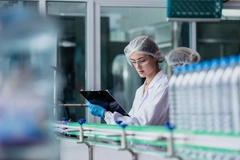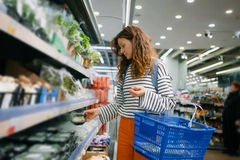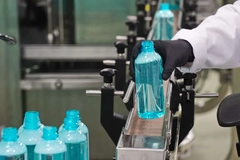Stanelco markets new tray heat sealing technology

A former UK manufacturing company has found another use for its radio frequency technology — sealing plastic tray packages of perishable food for supermarkets, retailers and grocers. Stanelco has already launched the product in the UK in a partnership with the ASDA supermarket chain.
A former UK manufacturing company has found another use for its radio frequency technology — sealing plastic tray packages of perishable food for supermarkets, retailers and grocers. Stanelco has already launched the product in the UK in a partnership with the ASDA supermarket chain. This week the company opened an office in Orlando, Florida. The company plans to target ASDA’s parent company, Wal-Mart, along with Albertson's, Kroger's and Safeway. The MAP method works by replacing the air with a mixture of inert gases such as carbon dioxide and nitrogen. The package is then heat sealed. The low-oxygen mix extends the shelf-life of the meat, vegetables and other perishable foods by up to 15 days from the normal five days. However, typical MAP heat-seal processing results in about two per cent of the packaged food not being sealed properly, resulting in wasted food, or worse, food that may have gone bad before its stated shelf-life. Stanelco’s radio frequency technology cuts the leaky package problem down to less than one per cent of those processed using MAP, White said. Current heat-sealing methods for plastic tray packaging uses a polyethylene laminate as a glue to make the seal, typically at between 150-160 Celsius. Stanelco’s Greenseal method does away with the laminate and welds the two sides of the package together at 50 Celsius using radio frequencies.











